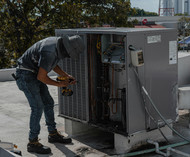HVAC Regional Efficiency Standards: What You Need to Know in 2024
Oct 17th 2024
As energy efficiency becomes a growing concern for homeowners and businesses alike, the U.S. Department of Energy (DOE) continues to update its HVAC standards to reduce energy consumption and environmental impact. HVAC systems—which include air conditioners, heat pumps, furnaces, and package units—are now required to meet stringent new standards. These standards are designed to ensure that HVAC equipment operates efficiently based on the specific regional climate. This comprehensive guide will walk you through these new requirements, helping you make informed decisions about your heating and cooling systems.
What Are the New SEER2 and HSPF2 Ratings?
The SEER2 (Seasonal Energy Efficiency Ratio) and HSPF2 (Heating Seasonal Performance Factor) ratings were introduced in 2023 to replace the older SEER and HSPF metrics. These ratings reflect real-world operating conditions of HVAC systems more accurately. SEER2 measures the cooling efficiency of air conditioners and heat pumps, while HSPF2 measures the heating efficiency of heat pumps. The higher the rating, the more efficient the system is.
Why the Change?
The old SEER and HSPF ratings were based on ideal laboratory conditions, which didn't always translate to real-world energy performance. SEER2 and HSPF2, however, are measured with a more rigorous testing methodology that accounts for field conditions, ensuring that the ratings reflect the actual energy performance of the equipment. By switching to these new metrics, the DOE aims to provide homeowners with systems that deliver the best possible performance in their region's climate.
Regional Standards: Understanding the Differences
One key aspect of HVAC efficiency standards is that they vary based on region. The U.S. is divided into three primary regions for HVAC efficiency purposes: North, South, and Southwest. These regions have unique requirements due to their differing climate conditions, which affect how hard an HVAC system must work to cool or heat a home.
Northern U.S. Standards
The Northern U.S. is characterized by cooler climates, which means air conditioning units do not need to work as hard for extended periods. As a result, the minimum SEER2 requirement for air conditioners in this region is SEER2 13.4, which is slightly lower than in warmer regions. This ensures that the systems used are energy-efficient but also cost-effective. For heat pumps, which are essential in colder climates, the minimum HSPF2 requirement is 7.5, ensuring adequate heating performance during the winter months.
States in the Northern U.S. Region:
- Connecticut
- Delaware
- Illinois
- Indiana
- Iowa
- Maine
- Massachusetts
- Michigan
- Minnesota
- Missouri
- Montana
- Nebraska
- New Hampshire
- New Jersey
- New York
- North Dakota
- Ohio
- Pennsylvania
- Rhode Island
- South Dakota
- Vermont
- West Virginia
- Wisconsin
- Wyoming
Southern U.S. Standards
In the Southern U.S., where temperatures are higher for much of the year, air conditioning systems need to work harder to cool homes. As a result, the DOE has set a higher SEER2 requirement for these regions. Air conditioners must meet a minimum SEER2 of 14.3, ensuring that these systems can handle the prolonged cooling demands efficiently. Heat pumps in this region must also meet an HSPF2 of 7.5.
States in the Southern U.S. Region:
- Alabama
- Arkansas
- Georgia
- Florida
- Kentucky
- Louisiana
- Maryland
- Mississippi
- North Carolina
- Oklahoma
- South Carolina
- Tennessee
- Texas
- Virginia
- Washington, D.C.
Southwestern U.S. Standards
The Southwest has additional requirements due to its extreme heat conditions. In addition to SEER2, systems must meet EER2 (Energy Efficiency Ratio) standards, which measure a system's efficiency at peak cooling conditions.
- Minimum SEER2: 14.3
- Minimum EER2 for Split Systems: 11.7
- Minimum EER2 for Single-Packaged Units: 12.2
States in the Southwestern U.S. Region:
- Arizona
- California
- Nevada
- New Mexico
Types of HVAC Equipment and Their Standards
Understanding how these standards apply to different types of HVAC equipment is crucial for making an informed purchase. Below, we discuss various equipment types and their specific requirements.
Air Conditioners
Air conditioners are vital for cooling homes, especially in warmer climates. They must meet the regional SEER2 standards:
- North: Minimum SEER2 13.4
- South and Southwest: Minimum SEER2 14.3
- Southwest: Additional EER2 requirements as specified
Heat Pumps
Heat pumps provide both heating and cooling and are especially popular in moderate climates.
- All Regions: Minimum SEER2 14.3 and HSPF2 7.5
Furnaces
While furnaces are not governed by SEER2 or HSPF2 ratings, they have their own set of efficiency standards measured by the Annual Fuel Utilization Efficiency (AFUE).
- National Standard: Minimum AFUE of 80%
- Northern States: Some states require AFUE of 90% or higher
Air Conditioner Package Units
Air conditioner package units house all heating and cooling components in one outdoor unit, making them ideal for homes with limited indoor space.
- North: Minimum SEER2 of 13.4
- South and Southwest: Minimum SEER2 of 14.3
- Southwest: Additional EER2 of 11.7 or 12.2 depending on the system type
Package units are available in:
- Gas-Electric Combinations: Use gas for heating and electricity for cooling
- All-Electric Models: Use electricity for both heating and cooling
- Heat Pump Configurations: Provide efficient heating and cooling using refrigerant cycles
Why These Standards Matter
HVAC systems are a significant investment, and understanding how these energy efficiency standards impact performance and costs is crucial. By choosing a system that meets the new SEER2, HSPF2, and EER2 standards, homeowners can save on energy bills, reduce environmental impact, and increase home comfort.
Long-Term Savings and Performance
While systems with higher efficiency ratings often come with a higher initial cost, they offer long-term savings on energy bills. The DOE estimates that homeowners who upgrade to systems meeting the new standards can save hundreds of dollars annually. Additionally, these systems provide better cooling and heating performance, which means your home will be more comfortable year-round.
How to Choose the Right System for Your Region
When selecting a new HVAC system, it's essential to consider your region's specific requirements and climate.
- Northern States: Focus on systems that meet SEER2 13.4 and HSPF2 7.5 standards for efficient cooling and heating.
- Southern and Southwestern States: Opt for systems with SEER2 14.3 and, if in the Southwest, ensure they meet the additional EER2 requirements.
Consider Your Equipment Type
- Air Conditioners: Ensure they meet the regional SEER2 standards.
- Heat Pumps: Check for both SEER2 and HSPF2 compliance.
- Package Units: Verify that they meet both SEER2 and EER2 standards if you're in the Southwest.
Trust HVAC365 for Your HVAC Needs
At HVAC365, we specialize in providing a wide range of HVAC systems that meet the latest DOE standards. Whether you need an air conditioner, heat pump, furnace, or package unit, we can help you find a system that offers the right balance of efficiency, performance, and cost for your region.
Our team of experts can guide you through the process.
Final Thoughts
Navigating the new HVAC efficiency standards doesn't have to be overwhelming. By understanding the SEER2, HSPF2, and EER2 ratings and how they apply to different types of equipment and regions, you can make an informed decision that will benefit you for years to come.





